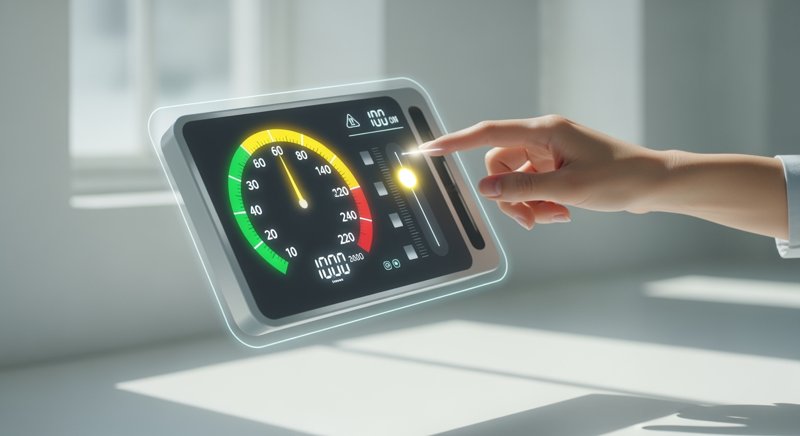🫀 Blood Pressure on the Edge: The Science of Reversing Prehypertension

There’s a critical gray zone in cardiovascular health that millions of people inhabit, often without realizing the danger. It’s the moment your blood pressure monitor flashes a reading like 135/85 mmHg. It’s not a full-blown crisis, but it’s far more than just a “bad day.” This is prehypertension, or high-normal blood pressure, and it’s a definitive warning shot from your cardiovascular system.
The trap of prehypertension is that it’s asymptomatic. Nothing hurts. But inside your arteries, a silent process of damage has begun. The constant, elevated pressure causes micro-tears in the vessel walls, making them stiffer and more susceptible to the buildup of atherosclerotic plaque. This is the beginning of a long road that can lead to heart attack, stroke, and kidney disease.
The good news? Prehypertension is a crossroads. It’s a window of opportunity where you can reverse the trend and restore your cardiovascular health, often without medication. This is your evidence-based guide to seizing that opportunity.
You Are the CEO of Your Data: The Power of Home Monitoring
A single blood pressure reading in a doctor’s office is a blurry snapshot. To get a clear picture, you need a high-definition video, and that comes from consistent home blood pressure monitoring (HBPM). The latest guidelines from the American Heart Association (AHA) and American College of Cardiology (ACC) emphasize that out-of-office measurement is the gold standard for diagnosing and managing hypertension.
The Evidence-Based Protocol for Accurate Measurement
- Get a Validated Device: Choose an automated, upper-arm cuff monitor that has been validated for accuracy. The AHA maintains a list of validated devices. Avoid wrist and finger monitors, as they are less reliable.
- Master the Technique: Sit in a quiet room with your back supported and feet flat on the floor. Rest for 5 minutes. Place the cuff on your bare upper arm, at heart level. Do not talk or look at your phone during the measurement.
- Follow the Schedule: The standard protocol is to measure your blood pressure twice a day: once in the morning before medication or breakfast, and once in the evening. Each time, take two readings, one minute apart, and record the average.
- Keep a Log for One Week: For an accurate diagnosis, your doctor needs to see a week’s worth of data. This helps to average out daily fluctuations and provides a much more reliable picture than a single office visit.
The Four Pillars of Reversal: Evidence-Based Lifestyle Medicine
These are not just suggestions; they are powerful, scientifically-backed interventions that can have a profound impact on your blood pressure.
1. The Sodium-Potassium Balance
The narrative around salt is often oversimplified. The real story is about the balance between two key minerals: sodium and potassium. While excess sodium drives blood pressure up by causing fluid retention, potassium has the opposite effect: it helps the body excrete sodium and relaxes the walls of your blood vessels.
The Game Plan:
- Eliminate the “Hidden” Sodium: The vast majority of our salt intake comes from processed and restaurant foods. The most impactful step you can take is to cook more meals at home.
- Prioritize Potassium: The goal is to increase your intake of potassium-rich whole foods. This includes leafy greens, bananas, avocados, beans, and potatoes. A diet rich in these foods naturally helps to counterbalance the effects of sodium.
- Read the Labels: Become a detective when you shop. You’ll be shocked at the sodium content in seemingly healthy foods like bread and canned soups.
2. The Science of Sleep
Sleep is not a luxury; it’s a non-negotiable pillar of cardiovascular health. During deep sleep, your sympathetic (“fight or flight”) nervous system powers down, and your blood pressure naturally dips by 10-20%. This nightly “dip” is essential for allowing your cardiovascular system to rest and repair.
Chronic sleep deprivation (less than 6-7 hours a night) prevents this dip, keeping your body in a state of constant, low-level stress. This leads to elevated levels of stress hormones like cortisol and adrenaline, which constrict your blood vessels and drive up your blood pressure.
Non-Negotiables:
- Consistency is Key: Go to bed and wake up at the same time every day, even on weekends, to anchor your circadian rhythm.
- Create a Sanctuary: Your bedroom should be a cave: cool, dark, and quiet.
- Mind the Snore: Loud, disruptive snoring can be a sign of sleep apnea, a serious condition and a major cause of high blood pressure. If you suspect you have it, a sleep study is essential.
3. Movement as a Prescription
Regular physical activity is one of the most potent non-pharmacological treatments for high blood pressure.
- Aerobic Exercise: Activities like brisk walking, cycling, or swimming make your heart a more efficient pump. A stronger heart can pump more blood with less effort, reducing the force on your arteries. The standard recommendation is 150 minutes of moderate-intensity aerobic exercise per week.
- Isometric Exercise: A growing body of evidence suggests that isometric exercises (static contractions, like wall sits or planks) can be particularly effective at lowering blood pressure. These exercises create a unique physiological response, leading to a significant relaxation of the blood vessels after the contraction is released.
4. The Weight-Loss Multiplier
Losing even a small amount of excess weight can have a dramatic impact on blood pressure. For every kilogram (2.2 pounds) of weight you lose, you can expect your systolic blood pressure to drop by about 1 mmHg. The 2025 guidelines emphasize that a weight loss of just 5% of your body weight can lead to a clinically significant reduction in blood pressure.
The Crossroads
A reading of 135/85 is a clear signal from your body that the current path is leading toward cardiovascular disease. But it is also a gift—an early warning that gives you time to act. By embracing these evidence-based lifestyle strategies, you are not just treating a number; you are upgrading your entire operating system. You are choosing a different path, one that leads to a future of health and vitality. The choice is yours to make.





